Ports of Call... 74-day War, Penguins, Penguins, Penguins, site of the first World Cup, and a Meaty Tango.
- Gillian Brinnand

- Mar 19
- 12 min read
Updated: Apr 25

The Falkland Islands or Islas Malvinas?
It took another day in the open ocean to reach our first port of call, the Falkland Islands, or the Islas Malvinas, as Argentina calls them. The cruise ship was too big to go into the port of this little 4,700 sq mi island, 300 miles from anywhere, so they dropped the lifeboats and shuttled us in. It's good to know they work. We arrived safely to shore and purchased a ticket for the hop-on hop-off bus, excited to see this historical, controversial speck in the ocean.
Most people have heard of the Falkland Islands but don't remember exactly why. Well, I will give you a brief overview. From when the first Europeans set foot on its shores to the present day, various nations have argued over who has sovereignty over the archipelago. The first recorded landing was in 1690 by the British Captain John Strong. The French established the first settlement (Port Louis) on East Falkland in 1764, so the British claimed the west side and established a settlement there (Port Egmont) in 1765. Spain jumped in by taking control of the islands in 1770, forcing out the British, and maintained a settlement on East Falkland until 1811. The British, however, maintained their claim and briefly re-established a presence on West Falkland before withdrawing in 1774. They did leave a plaque, though, saying, “We will be back.” After Argentina's independence from Spain in 1820, they claimed the Falklands or, as they call them, Islas Maldivas, but in 1833, nearly 60 years after leaving the Falklands, the British decided to return and reassert their authority. The settlers living in the Islands were allowed to remain, and the British built a naval base at Stanley. Over the next 150 years, the Falklands proved a strategic point for ships navigating around Cape Horn, ideally located to service ships during World Wars I & II. However, despite this strong British presence in the islands, Argentina had never officially given up its claim to the Falklands.
The Falklands War
The situation came to a head in April of 1982 when Argentina invaded the Falklands, South Georgia, and the South Sandwich Islands, all British territories in the South Atlantic. At the time, Argentina was embroiled in an economic crisis and civil unrest over the unjust military junta rule. Government leader General Leopoldo Galtieri sought to divert rising public unrest by exploiting his country’s long-standing territorial feelings towards the Falklands. The U.N. Security Council called on Argentina to withdraw and for the two countries to resolve the issue peacefully. When Argentina refused, the British sent their troops to reclaim the islands by force, leading to the brief but intense Falklands War.
The British launched their famous navy to retake the islands by amphibious assault, and the ten-week conflict resulted in 649 Argentinean deaths and 258 British deaths. The British were victorious and reclaimed the territory on June 14, 1982, although neither country declared war. In the years since the war, the British strengthened their military presence in the Falklands and 1989 resumed diplomatic relations with Argentina. These relations are still somewhat tense, however, as Argentina has recently renewed its claim over the Falklands and requested that Britain reconsider the issue of sovereignty.
So there you have it. I tried to keep to the facts, but obviously, this description might be told differently from the Argentinian standpoint, as all history is.
Gypsy Cove

Back to our trip. As I said, we got a ticket on the hop on hop off bus, and the first stop was Gypsy Cove, where it was told penguin sightings were possible. Regardless, it was stunning in its rugged, wind-swept beauty. So we slowly made our way down the trail, and while looking at the gorgeous cove, I spotted three penguins... and they were King Penguins. Oh, how much joy I had watching these three stooges walking down the beach.
York Bay
The next stop was another possible penguin spot with a little longer walk over sand dunes. Again, Dad and I took time at the back of the tourists' pack and saw a stile over a fence with an information plaque on the other side with a trail. So we both decided this would be much more scenic than the road and took it. It weaved around a pond and over some large sand dunes and came out to a portion of the beach where no people were, so we went down to the water, and low and behold....penguins, penguins, penguins, loads of gentoo penguins. We carefully approached them, keeping our distance and watching what we were stepping on, and sat down on the beach to take it all in. Well, that's when we got yelled at. Apparently, if we had taken the tourist route, we would have seen that sign that said don't go near penguins due to bird flu. Whoops. There really was no sign in the direction we came, but it was so cool, and I don't think we caught bird flu.

Stanley
The last stop was the town of Stanley. We checked out the well-done Historic Dockyard Museum, the Christ Church Cathedral, the Whalebone Arch, and by far the best place...Victory Bar.

Victory Bar
This was on the top of my list of attractions for Stanly. The third oldest bar in the Falkland Islands, The Victory Bar, was opened on 14th October 1946. It is world-renowned for its fish and chips and cask ale, which is right up our alley. Dad and I luckily found two seats at this bustling little bar and promptly met Cathy, the bartender/ owner. I say promptly met but not quickly served. As Dad said, "She's your typical Southampton barmaid, crotchety and crash but sweet as honey if you give it right back to her." A lady approached the bar and asked where she should put the dirty dishes on her table, and Cathy replied, "Get back in the kitchen and wash them." She also told us the story of when Prince Harry came to the island after the war, and she had to kick him out. She said, "Well, it was 3 am; I don't care if you're the Prince of England, I bloody need to get some sleep." She was so much fun. Then we also met a submarine pilot for a different cruise ship, obviously a wee bit more expensive than the one we were on, to have their own submarine, but he did show us the incredible videos he shot of cruising around under the ice. So amazing!!!

Punta Tombo Excursion in Puerto Madryn

The next port of call was Puerto Madyrn, Argentina. We didn't get to explore this little town on the eastern coast of Argentina, part of Peninsula Valdes, because we booked a tour to Punta Tombo to see... you guessed it... more penguins. The nature reserve of Punta Tombo is home to the world's largest colony of Magellanic penguins, with upward of a million visiting annually. The drive from Puerto Madryn to Punta Tombo was about 2 hours, with a stop in Trelew to see a statue of a Patagotitan. It was near this spot back in 2010 that a farmer at La Flecha Ranch spotted an enormous dinosaur bone poking out of the ground. It turned out to be the femur of what is now known as the world's largest dinosaur, coming in at 123 feet in length and weighing over 125,600 pounds. For all you dinosaur geeks out there, Patagotitan is titanosaur, a type of sauropod who roamed the earth 101 million years ago. It was a pretty momentous find.

The first Magellanic penguins to nest in Punta Tombo settled on the La Regina family ranchlands in the mid-1920s. As the colony grew, the La Reginas wanted to protect the birds, donating 520 acres to create a preserve at Punta Tombo, with an additional 35 acres for an interpretive center that now hosts more than 100,000 visitors annually. Driving to the interpretive area, we saw a herd of Guanaco, a smaller cousin of the llama and alpaca but equally cute, and a few rheas or nandus as they are called in Argentina, which is similar to emus.
Then we saw the penguins. It's a little late in the season, so there are not as many as earlier, but, oh my, they were so adorable, and we were able to get so close without getting in trouble. Magellanic penguins are the only penguins to nest in underground burrows. Males reclaim their previous year’s burrow and wait for their mate, whom they recognize by her call. So romantic. They usually lay two eggs, and both parents share responsibilities for incubating eggs and feeding chicks.

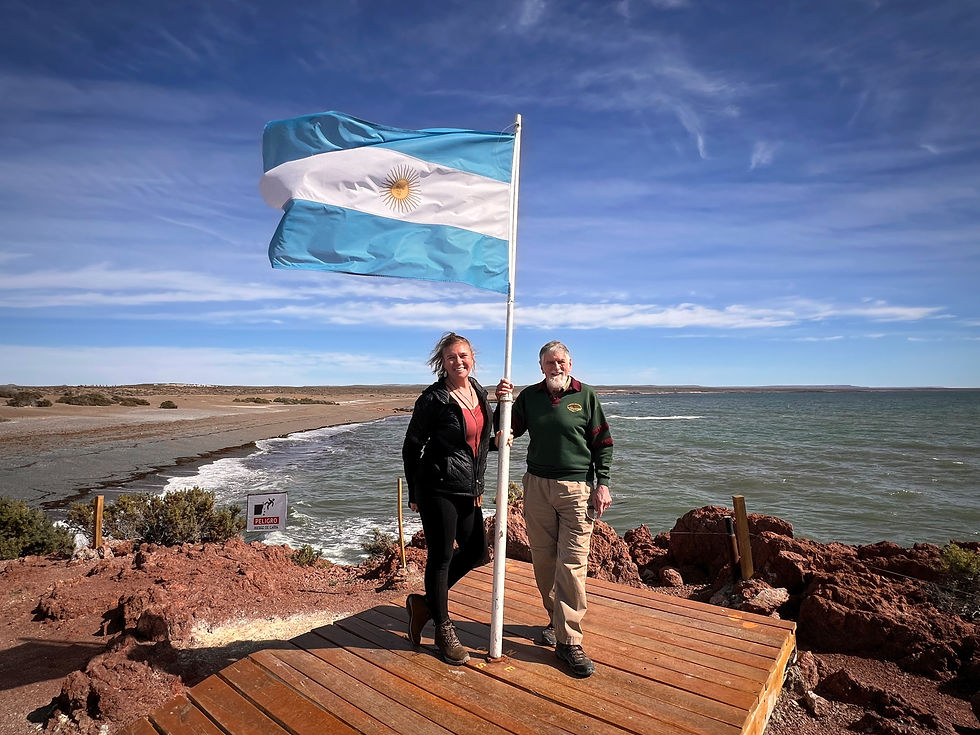
We also spotted these wild animals in Punta Tombo. Careful, very dangerous.

Montevideo, Uraguay

Uruguay is a small, progressive country bordered by Brazil and Argentina. The government is a pioneer in social policies, being the first in the region to legalize same-sex marriage, marijuana, and abortion. Montevideo, its capital, is rich in history, with a laid-back vibe and vibrant culture. But for football fans, its biggest claim to fame is that it is the home to the first World Cup. We decided to opt for another hop-on hop-off bus trip to explore Montevideo.
Estadio Centenario

First stop was Estadio Centenario. This UNESCO World Heritage Site was built for the inaugural FIFA World Cup in 1930 and holds a special place in the hearts of Uruguayans, symbolizing their passion for football and their nation's sporting legacy.
The first FIFA World Cup was organized to celebrate Uruguay’s 100th anniversary of independence. Thirteen teams participated, and Uruguay defeated Argentina 4-2 in the final to become the first World Cup champions. The tournament laid the foundation for the global football competition, and Uruguay's victory remains a key moment in the country's football history. Three very important footballers are in the photo above.
Mercado del Puerto
Situated in the Old City, Mercado del Puerto is an essential destination for experiencing Uruguay's culinary and cultural heritage. Established in 1868, this historic market is a lively center with a vibrant and energetic atmosphere where you can discover local crafts, souvenirs, and art. However, it is most renowned for its traditional Uruguayan barbecue (asado). Dad and I navigated through the throngs of tourists vying for seats at the numerous restaurants, eager to sample the world-famous Uruguayan asado. Asado has been integral to Uruguayan culture for centuries, with its origins linked to the gauchos, the country's legendary cowboys. These gauchos were adept horse riders and cattle herders who traversed the expansive plains of Uruguay and Argentina during the 18th and 19th centuries. As they journeyed, they would grill meat over an open flame, utilizing whatever materials were at hand. So, Dad and I found a seat, front and center to the open flame, and not only enjoyed a delicious lunch but got to see how they do it up close and personal.
The Plaza del Mercado del Puerto outside the market was equally as lively. I set out to explore the little shops and galleries while Dad took in the energy of the plaza.

The time was too short, but the small taste of Montevideo, with its European architecture, love of football, and laid-back vibes, definitely made me want to explore it more.
Buenos Aires, Argentina
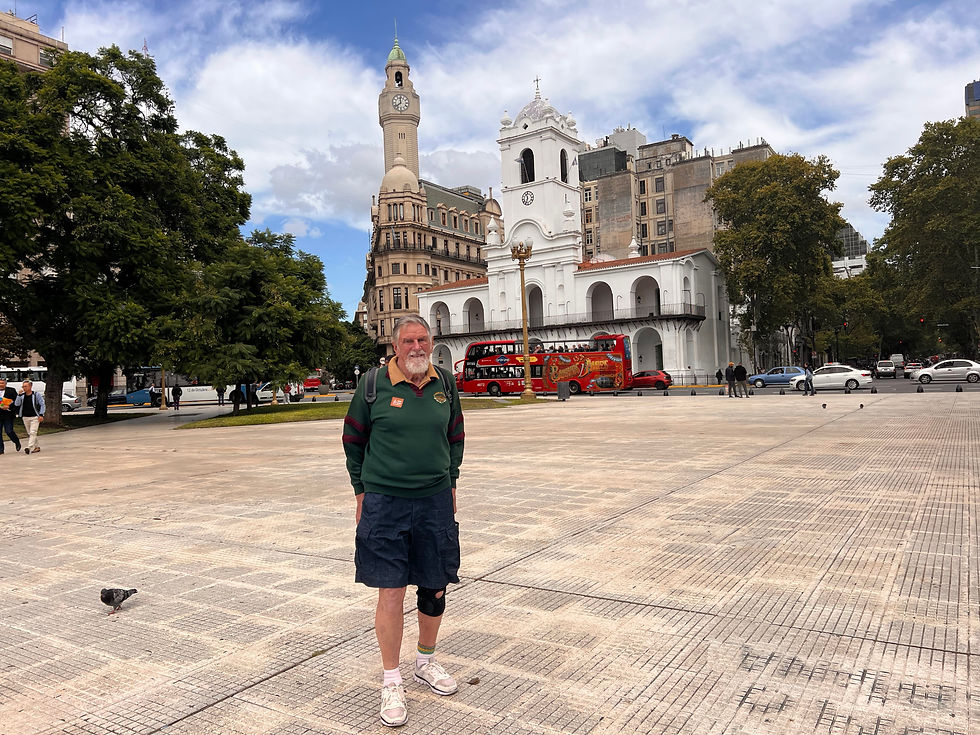
I’m not going to lie; the beginning of our port call to Buenos Aires was rough. We decided that rather than the hop-on hop-off tours we had been doing in the other ports, we would take a tour with an English-speaking tour guide. Also…when in Rome…I wanted to see a tango show in the place it was born, so we added on a Tango/Lunch show. So we waited an hour in the cruise terminal for the tour to begin, and when we finally got on the bus, it was overbooked; because we were the only English-speaking ones on the bus, we assumed they booked us on the wrong tour, so we got off and waited another hour for the next tour. Mind you, we only had eight hours to explore this “Paris of the South” eclectic, cultured city, so my blood pressure went through the roof sitting in a cruise port for two hours. But we finally boarded the bus, and...well…most everyone spoke Spanish again. Our guide, as sweet as she was, did not have an excellent grasp of English and, for each point of interest, had to talk in Spanish, Portuguese, and English, so most of the time, we would be past the point of interest by the time she told us about it, but enough complaining. Our first stop was Plaza de Mayo.
Plaza d Mayo
Plaza de Mayo is the oldest and most iconic public square in Buenos Aires. It serves as the city’s political, financial, and administrative hub. The square is named after the May Revolution of 1810, which began Argentina’s path to independence from Spain. We explored and photobombed key landmarks surrounding the plaza, including the Casa Rosada (the presidential palace and place of the famous balcony speech of Eva Peron), the Cabildo (a colonial-era government building), the Metropolitan Cathedral, and the May Pyramid, a monument commemorating the revolution.

La Boca
We finally reached the spot I really wanted to see, La Boca. Known for its vibrant street art and colorful houses, often painted with leftover ship paint, I was excited to wander the cobblestone streets of the Caminito walkway, filled with artist stalls and tango dancers. Originally a port area settled primarily by Italian immigrants, particularly from Genoa, it developed a working-class and artistic identity, but the striking colors are what truly captivate you.


To say Argentinians love footbol is a vast understatement. Buenos Aires itself has 24 professional football teams and is home to five of the most popular and influential teams in all of Argentina, known as the "Big Five": Boca Juniors, River Plate, Independiente, Racing Club, and San Lorenzo. La Boca is also home to the Boca Juniors football stadium, La Bombonera. The name makes sense. We would have loved to have caught a game, but that must be for another day. Dad did get to hang with their most famous player, Messi. It's a very popular jersey. I was impressed with how he got up there.

We also got to witness love in action. A man got down on one knee and proposed to his love. It was a beautiful thing to witness. Best of luck to "The Couple."

We finished up our La Boca tour with a Patagonia beer once Dad figured out how many Argentinian Pesos we spent.

The Meaty Tango
So, the last stop on our Buenos Aires City tour was an authentic tango show and a three-course lunch with a bottle of wine. Dad and I and about four couples got rushed into this event-looking space and sat at this little round table with a couple of glasses of water and about fifty other people. Tours are always unknown, and this did not look like a spot where a big fancy show would take place; it was more like a wedding dance floor. After about fifteen minutes, they came around with the best-tasting carne empanadas I have ever had, but it wasn't a three-course dinner, and where was our wine? In my broken Spanish, I inquired about the wine, and after the waiter tried explaining something to me, which I didn't quite get, we got two glasses of wine, and we were not impressed. We thought we got dupped.

Just as Dad was googling tango lunch scams of Buenos Aires, we were told to get up and were ushered into another room. Ahhhhh...this is more like it. We were seated at a long candlelit table with white tablecloths and bottles of wine on each table in front of a Vegas-style stage. We were next presented with "The Best Steak" I have ever had the opportunity to consume. This was not a scam. How could they make perfect steaks for all these tourists?


After our delicious steak was taken away and we were given our dessert, the orchestra started, and the show began. But first, a brief history of Tango:
Argentine tango originated in the late 19th century in the working-class neighborhoods of Buenos Aires, Argentina, and Montevideo, Uruguay. It emerged as a fusion of African, European, and indigenous influences, including candombe, habanera, waltzes, and polkas. Initially considered scandalous, tango gained popularity in the early 20th century, especially during its “Golden Age” from the 1930s to the 1950s—an interesting fact: initially, men danced the tango together. In the late 19th century, Buenos Aires had a significant imbalance of men to women, with estimates suggesting seven men to every woman. This led to men practicing and dancing tango with each other, both as a way to learn the dance and for social interaction. The first published photo of tango in 1903 featured two men dancing together. This practice was common and socially accepted until societal attitudes changed after World War II. The dance faced suppression during Argentina’s military rule but experienced a global revival in the 1980s. Today, Argentine tango is celebrated for its passionate and improvisational style. This show, in particular, had a modern twist, but I loved every minute of it; it was such a sexy, powerful dance.
Sea Days

We had many sea days while onboard "The Star." This worked out well for me because I had a paper to write for school, so I could find a spot to work for a few hours and then meet up with Dad and our friends for "ship activities." Our favorite was trivia. We may not have been all that good, but we were consistent and did win the best-named group award. But we also attended shows, lectures, and, of course, the fabulous karaoke.

We had many great meals full of laughter, fun, and yumminess, some with just Dad and me, where I heard stories from his life, and some with Dad, Tim, Linda, John, and Jane. Regardless, we were consistent with meeting up for pre-dinner drinks at "The Gatsby." I have to say that I was very impressed with the food and service. I'm still working off the extra pounds I put on.

One of my favorite parts of our sea days was... well... the sea. There were such spectacular sunsets, sunrises, and even a lunar eclipse.

On our final day on board "The Star," while pulling into the port at Rio De Janeiro, we were greeted with a spectacular rainbow. It was perfect for reflecting on how grateful I am for meeting new friends, seeing this beautiful world we live in, and experiencing what it has to offer, as well as for the time I spent with Dad. That was the true treasure of this cruise.
But.... we are not done. Make sure to keep an eye out for the final leg of the trip... A Wonder, Another Wonder, and the Best Part of the Trip.










































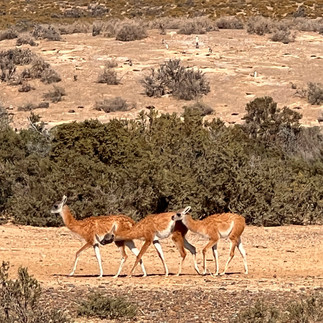

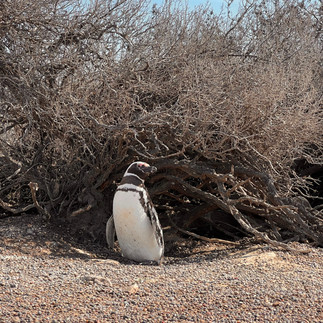























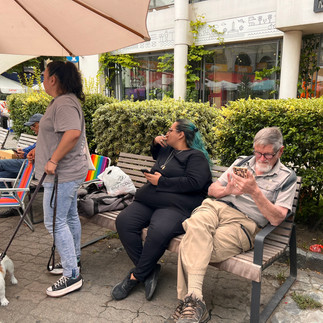

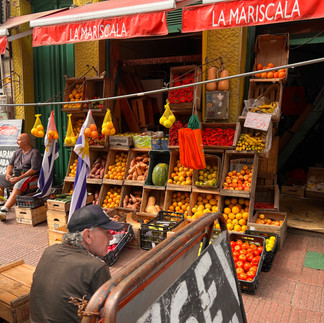





































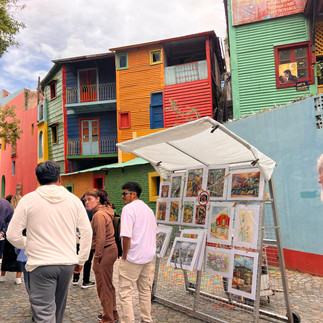











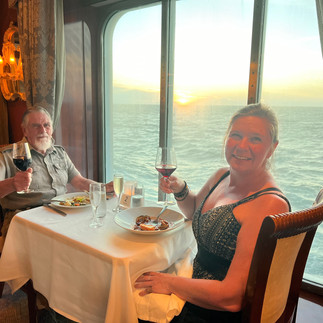





















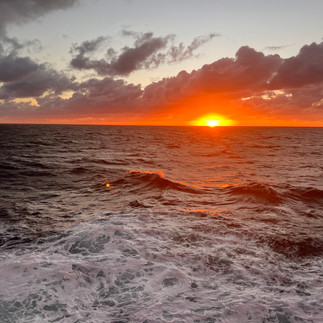



Comments